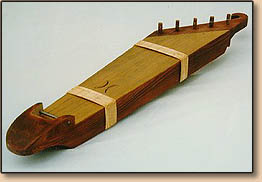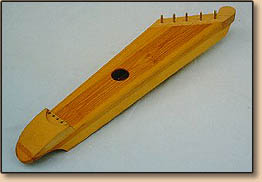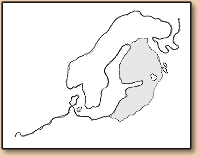There are two cantos in the Kalevala, the Finnish national epic, telling of the birth of a 5-stringed instrument, the kantele. Väinämöinen, the hero of the epic, created the first kantele out of fishbones and the jawbone of a giant pike, and the second out of birch wood. For the strings he took the tail hairs of an animal or a maiden´s tresses.The earliest literary documents mentioning the Finnish kantele date only from the 16th century, and there are precise descriptions prior to the 18th.
Of all the national symbols, the Kalevala and the kantele have roots stretching furthest back in time. They become mythical symbols of Finnish identity during the National Romantic period of the late 19th century. The popularity of the kantele declined with the growth of industry in the 20th century. For the past 30-40 years the development of the kantele has continued. The 5-string kantele have developed into the concert kantele.
The Finnish kantele is an instrument of great variety in its models, the music played on it, its traditions, and its manner and technique of performance. Thus the kantele is equally at home in all periods and genres of Finnish music.
Where does the kantele come from and where it is played ?
Scholars cannot quite agree over the kantele´s orgin, either its age or its relationship to instruments in other cultural regions. Some say that it orginally came from the Baltic, or that it is related to the Russian gusli, or the Arabic qanum. There is convincing proof of Slavic, Finnish-Baltic and Asian origin. During the second millenium AD the kantele has for centuries been one of the main instruments played by the Finns. Besides Finland, it is still played by other peoples around the Baltic Sea (in Karelia-kantele, Latvia-koukle or kokle, Lithuania-kankles, Estonia-kannel). Gusli instruments coincide with either the birth of the kantele or with its subsequent devolopment. There is literature on the origin of the instruments played in the Baltic region and Novgorod. Many kanteles were discovered during excavations of the ancient city of Novgorod date from 11th to 14th centuries.

Historical 5-string hollowed kantele.
Made by Jussi Laasanen 1984

Modern 5-string kantele.
Made by Jussi Laasanen 1994

Kantele's historical area of distribution